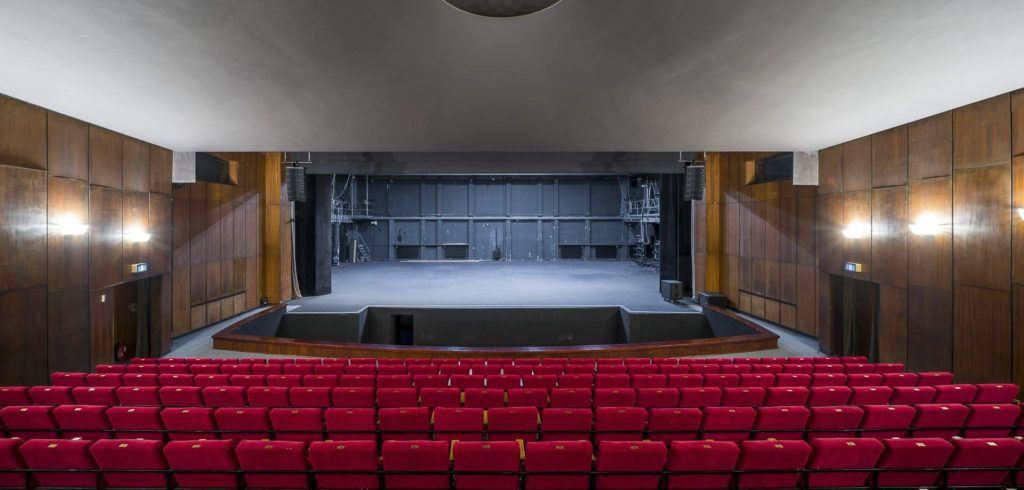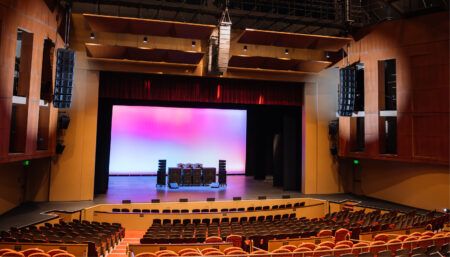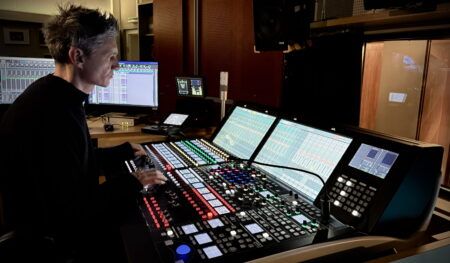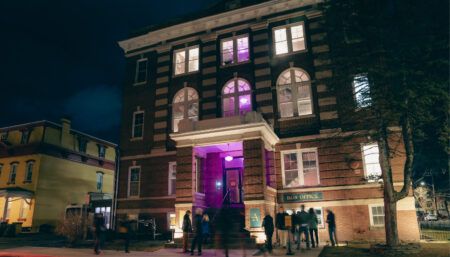The Grand Theatre – National Opera (Teatr Wielki – Opera Narodowa (TW-ON)), Poland’s grandest opera and ballet theatre, has had an audio overhaul to deliver “unprecedented sound versatility” to the 2,00-seater venue.
Housing a theatre complex, museum, opera company, and the Polish National Ballet, its Młynarski Hall, also known as the Chamber Music Hall, has been updated with a PA system to enhance its extensive programme of concerts, ballets, operas, and special events.
When it was time to upgrade this iconic venue’s system, the team invited the top AV suppliers to participate in the tendering process.
The team consisted of the theatre’s Head of the New Audiovisual Technologies Department, Zdzisław Staszewski; Deputy Head of the New Audiovisual Technologies Department, Łukasz Baska; and Head of the Audio Execution Section, Michał Polański. They were responsible for conducting the tender for the Młynarski Hall, and developing a detailed listening procedure which the team presented to Polish equipment supplier and L-Acoustics Certified Provider Distributor, Audio Plus, among two other AV candidates.
“TW-ON’s listening committee included a technical team of sound engineers, a robust artistic team consisting of a conductor, singer, musician, representatives from both the Academy of Opera and the Impresariat; and people from other units associated with the artistic work of TW-ON,” Audio Plus marketing director, Paweł Kuhn explained. “It’s a testament to their commitment to getting the sound right, for technicians, for artists and for the audience.”
Companies joining the tender had to set up a complete PA system in the room, so the listening committee could evaluate the performance based on 14 soundtracks, which were grouped according to criteria such as timbre, sound balance, transparency, spatiality, and stereophonicity. The last criterion, used only for the signal of silence, was lack of interference.
“Each member of the committee could award up to five points to every criterion when listening to each music sample,” said Kuhn. “At the end, all the points for each system were summed up and compared against each other. It’s worth noting that at no point did the members of the committee know which brand of system they were evaluating, as room lights were dimmed during the listening sessions to ensure complete objectivity.”
Each system was discussed in depth by the core team in terms of its price point and warranty period. After the thorough evaluation process, L-Acoustics and Audio Plus were the indisputable winner, scoring the highest among all three systems.
“L-Acoustics turned out to be not only the best-sounding system, but also the most cost-effective,” notes Kuhn.
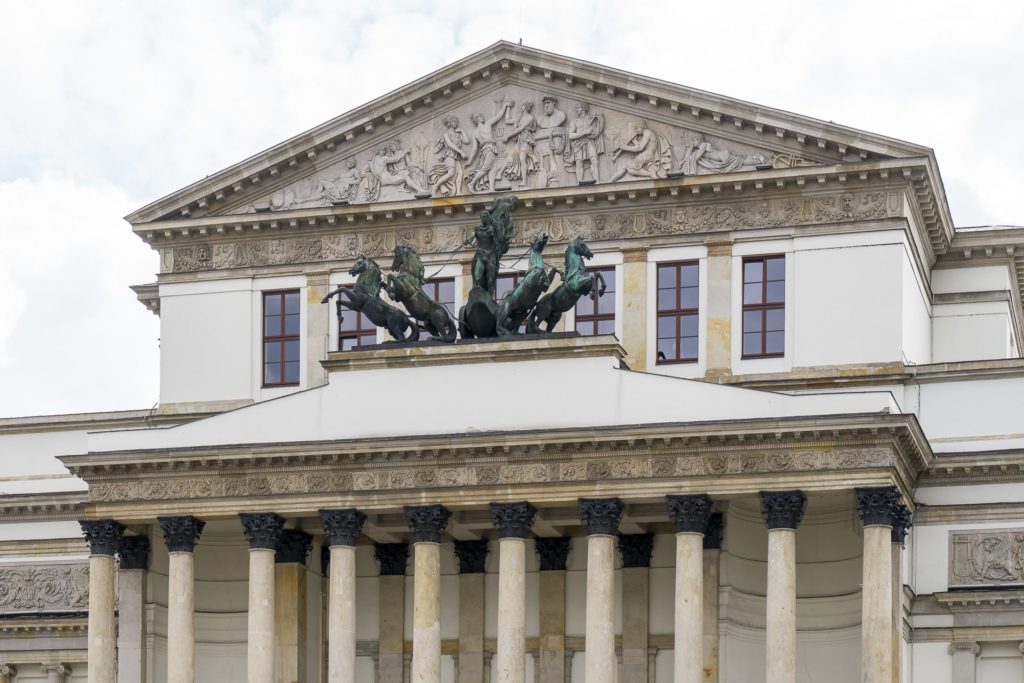
With the tender process finalized, Audio Plus’s team turned to the installation process. “The implementation consisted of two stages: design and installation,” said Kuhn. “This was another innovative step taken by TW-ON, as the complete ‘design and build’ process, which is a norm in the construction industry, is rarely used in professional audio.”
Before the installation took place, Audio Plus delivered a complete overview of the project: Installation of mechanical elements, such as speaker bars for the front of house system; suspension for the stage monitor system, the overall audio system, and the cable routes – and air conditioning for the amplifier room.
The installation process took place mainly at night, to allow the theatre to continue with its usual routine during the day and evening. “The theatre has a turbulent history having been burnt to the ground several times, and popular legend says that it has an evil spirit named Inkub inhabiting it. Evil or not, the installation process was definitely a challenge for our installation team”.
The assembly of the frontal groups of winches was particularly demanding, as the team had to work in the attic of the 60-year-old theatre, which required extraordinary precautions due to fire protection restrictions. The front of house installation was designed to allow at least three different configurations, which were specified by the theatre to offer a high level of versatility to TW-ON’s extensive performance programme.
For the concert configuration, the system uses two main hangs of six Kiva II with two SB18 subs placed left and right of orchestral pit. Ballet shows run on a similar configuration, but utilise just four Kiva II per side. The third configuration includes the surround sound option for special events, utilising three main hangs of four Kiva II with two SB18 subs, as well as X8 for effects, with four units placed left and right of the auditorium and two X8 placed on the back wall of the room. The entire system is powered using six LA4X amplified controllers in fixed racks, with two LA4X in mobile racks available when needed. The X8 can also be utilised for front fill.
The stage monitor system covers an extremely deep stage area: two rows of four single ARCS Wide are suspended left and right of the technical balconies, and one ARCS Wide invisibly attached to each portal tower, as if it is levitating. Four X15 HiQ provides floor monitoring if required, but these can be removed if necessary to allow for differing stage configurations.
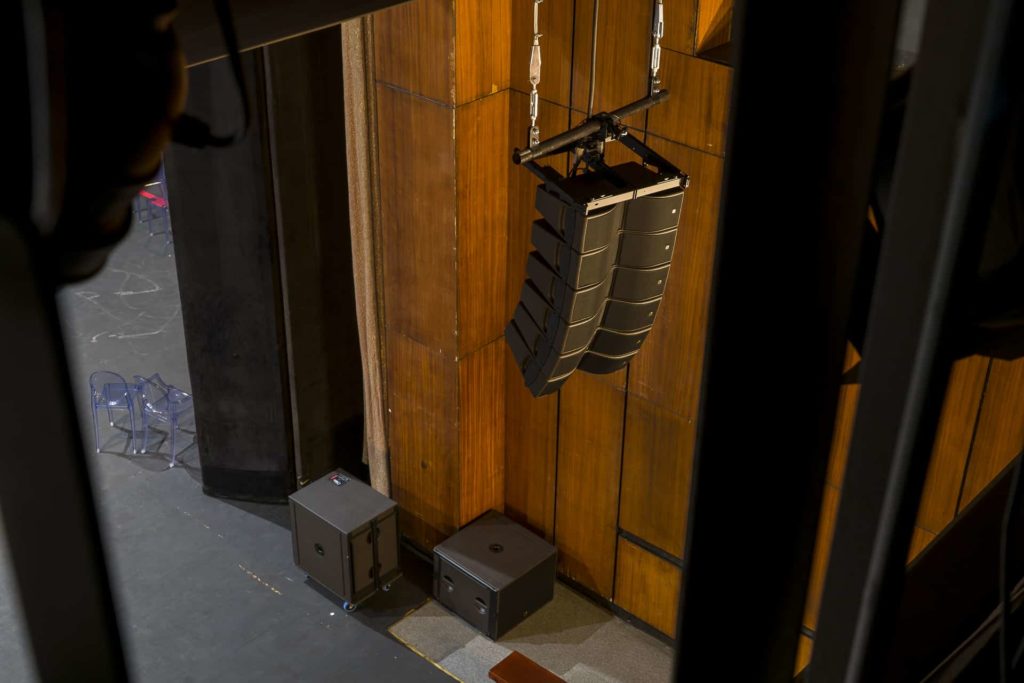
“To place the ARCS under the fly galleries we had to design our own slings,” said Łukasz Kaźmierczak, Audio Plus’s head designer, who was responsible for the sound system design. “Their non-standard feature is that single ARCS are rarely used in a hung configuration due to their relatively small area of horizontal coverage.”
The narrow horizontal coverage of the ARCS system delivered an additional benefit for the team as it is ideal for the needs of the various stage configurations. The ARCS can be used individually in several lines. However, they can also be grouped – to a maximum of three – and thus cover the entire area from one, two, three, or even four sound sources per side, not including the two cabinets in portal towers.
“The whole system is unobtrusive so that the entire audio system can be completely hidden,” adds Kaźmierczak. “And because the audio is connected to the Theatre’s existing AV emission and recording system (SERAV), the Młynarski Hall can both record and play material using the 5.1 and 7.1 omnidirectional sound system.” The whole system was ‘pinned’ with Cat7 twisted-pair cables, which also takes into account video signal requirements. Both the audio and video signals flow to the server room via optical fibre. The LA4X amplifiers were installed in a flexible way, with six units permanently installed in cabinets in the amplifier room, while the other two units in rack cabinets, so they can be moved as required. L-Acoustics’ Director of Application, Install David Dohrmann, and Application Engineer Ian Fellbom calibrated the system for maximum flexibility and trained the TW-ON team on the new system.
“The TW-ON staff members have been praising the L-Acoustics system from day one for its compact and unobtrusive profile, great sound consistency and, above all, its unprecedented versatility,” concludes Kuhn.
TW-ON’s Sound Director, Michał Polański concurs: “We planned the system in such a way that no elements are wasted and each unit works towards supporting the wider range of possible sound configuration. And we feel that we still have many more configuration possibilities. The versatility level of the final PA was as important to us as its sound quality, with L-Acoustics far exceeding our expectations on both fronts.”


